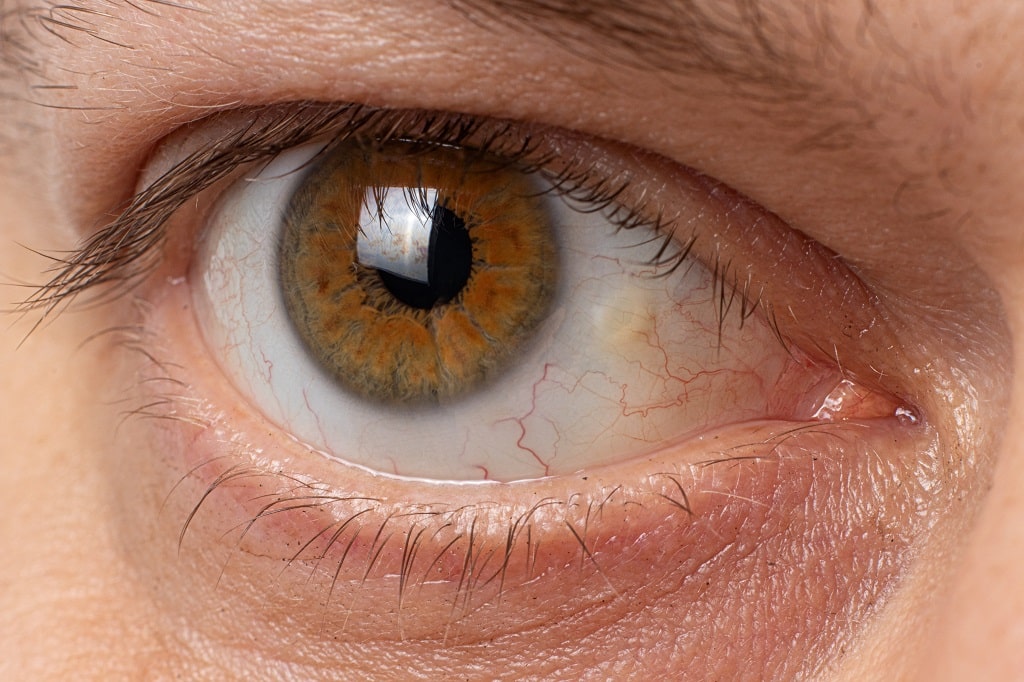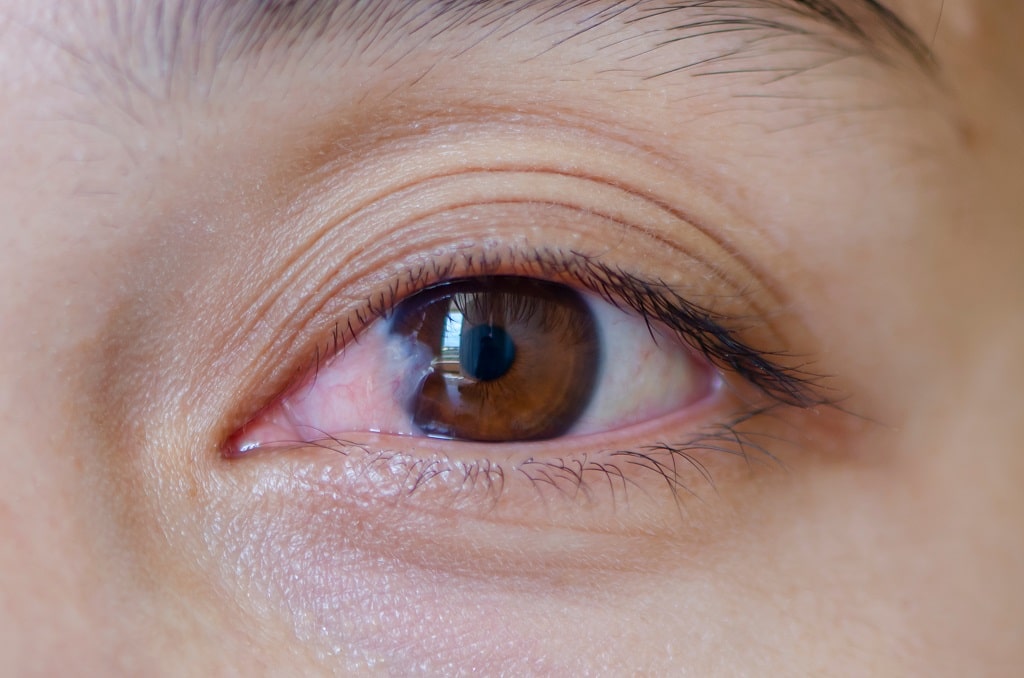
Updated: April 14, 2023
Two eye conditions that impact the eye’s conjunctival tissue are pinguecula and pterygium. Although these are benign growths that extend over the white part of the eye, they can still affect vision. Pterygium is also called surfer’s eye and it impacts the cornea while the pinguecula is conjunctiva growth. Let’s learn about pinguecula vs. pterygium and how these vision problems can be treated.
Now that we know that both pinguecula and pterygium grow on one or both eyes, let’s provide a formal definition. Surfer’s eye refers to these two types of growth that impact your vision. Specifically, these impact the white part of the eye referred to as your conjunctiva, the clear layer that extends over your sclera. Prolonged and consistent UV exposure is often the cause of these growths, but they can also develop from wind or sand exposure that causes particles to get into your eyes.
Even though the phrase surfer’s eye refers to both of these conditions, each growth has a different name. Each growth can develop in the same eye or in one eye at a time. Preventative measures such as wearing sunglasses and protective eyewear that have UV light blockers can help prevent the chance of developing these growths.
In severe cases of pterygium, your eye doctor may recommend surgery. For pinguecula, surgical removal is often not recommended to remove the yellowish-raised growth.
There are many differences between a pterygium and a pinguecula growth as they both develop on the conjunctiva. They most often occur in people who are between 30-50 years old and range from mild symptoms to extreme cases. Let’s look into some differences between the two below.

A pinguecula often looks unsightly and it impacts the conjunctival tissue. It is a yellow, raised bump that develops on the surface of your eye. It is a deposit of protein, calcium, or fat that can develop from excessive UV light exposure. With continued irritation a pinguecula can develop into a pterygium. Prolonged exposure to UV radiation could cause additional eye irritation while symptoms worsen.
Only in rare cases will a pinguecula grow large enough that it begins affecting vision and it is rarely surgically removed.
Pinguecula symptoms include:
If eye drops or steroid eye drops aren’t working to improve the irritating symptoms, surgery may be required.

A pterygium is a fleshy growth that usually starts on the conjunctiva and when it crosses onto the cornea is now considered a pterygia growth. It is “ fleshy “ in nature and has blood vessels.
If the growth has not extended centrally over the cornea your vision is usually not impacted. If it begins to spread more centrally over the cornea or if you have a recurrent pterygium and steroid drops aren’t working, your doctor might recommend that it be surgically removed.
Pterygia are a benign growth and not cancerous, yet, they can impact vision. Until there is concern that it is moving centrally or affecting vision it can be monitored. Eye drops or artificial tears can manage the more frustrating symptoms including:
You’re now likely wondering about the severity of pterygium or pinguecula on your long-term vision if they are left untreated. Fortunately, neither pterygia nor pinguecula is dangerous from a “ cancer “ standpoint. However, it’s important to note that pterygia can alter the shape of your cornea and ultimately lead to astigmatism if it worsens over time. In more severe cases the pterygia can distort vision, cause permanent scarring and can be blinding. Prior to this point doctors will recommend the removal of the pterygium to make sure that your vision doesn’t become impaired.
Pterygia surgery usually only takes about 30 minutes. You’ll want to avoid any work outdoors so your eye has a chance to heal.
When the growth is removed, you’ll want to make some overall lifestyle changes that reduce the risk of either a pterygium or pinguecula from developing again. Pterygia in particular do have significant risk of recurrence. Some studies report this risk as high as 40 percent but there are other studies that point to a recurrence rate of 5 percent.
Keeping your eyes protected from ongoing UV light during your time outdoors is the primary recommendation to minimize recurrence. You’ll also want to treat dry eye problems and avoid dry climates if possible. Make sure to keep your eyes free from dirt by wearing protective glasses.

A slit-lamp examination from your eye doctor can determine if you are developing pinguecula and pterygium. In some patients, the growth itself needs to be removed and examined underneath a microscope in order for the proper diagnosis. Because there are even some precancerous growths that can appear to be similar to pinguecula and pterygium, it’s better to be safe than sorry.
Here are some tips to prevent them from developing in the first place:
When it comes to your eye health, it’s always better to take precautionary steps rather than scramble to find the right solution. When you have doubts about whether or not you’re developing a surfer’s eye, it’s ideal to schedule an appointment with your eye doctor.
Our team at Discover Vision Centers is happy to assist you in a multitude of ways. Whether you’re looking for treatment for your pterygiumor pinguecula symptoms or you want to find out more about what’s causing your eye irritation, we can develop a treatment plan tailored to you. Contact our team today to get started!